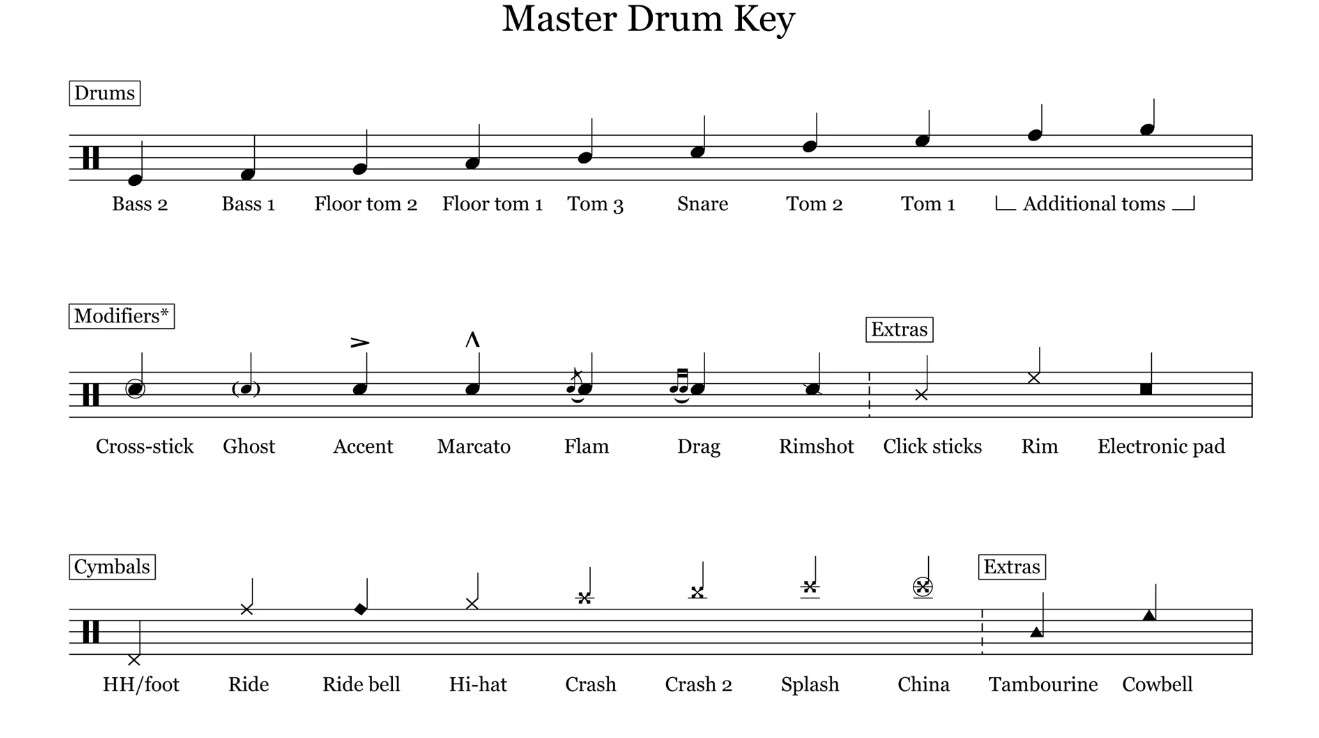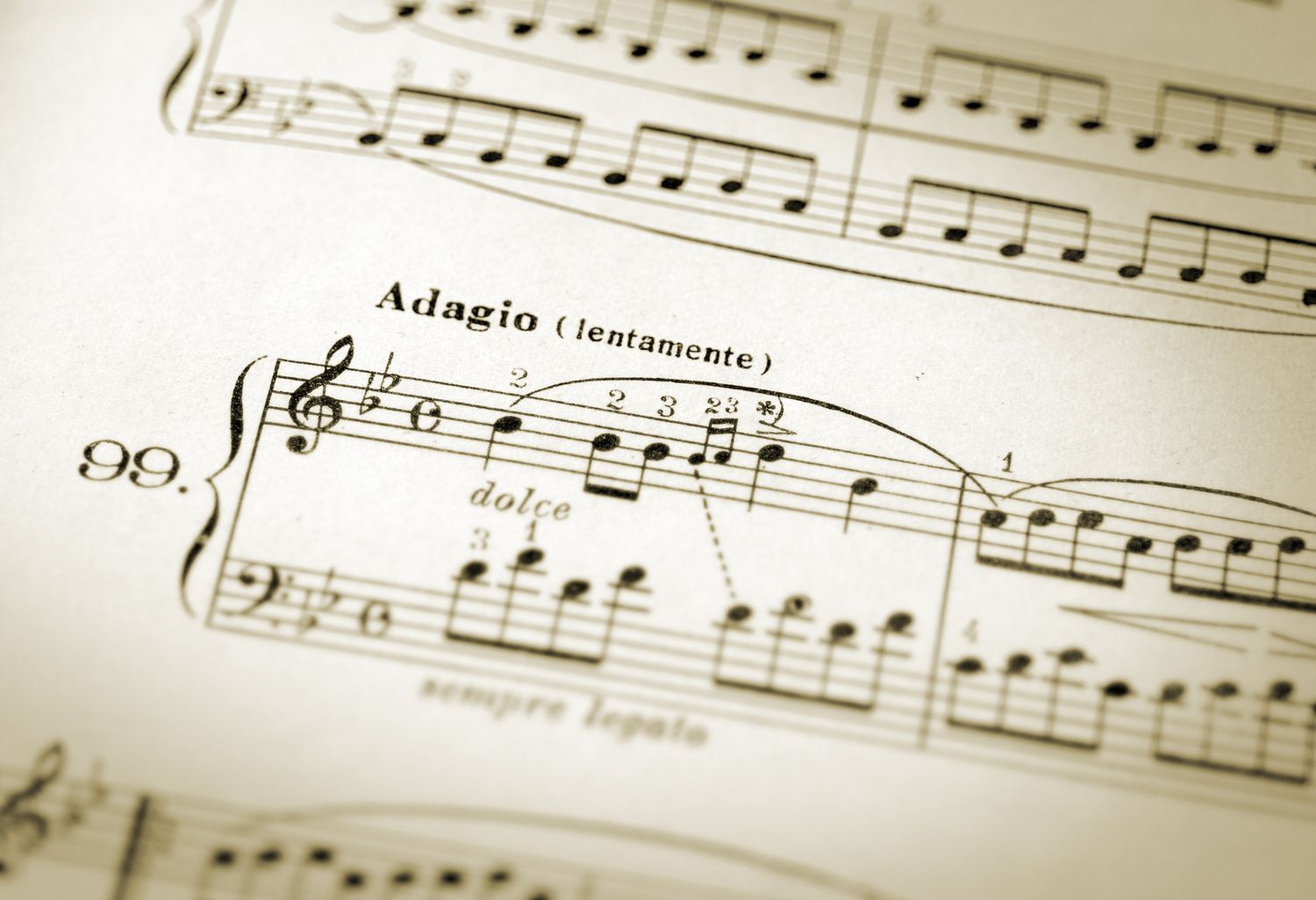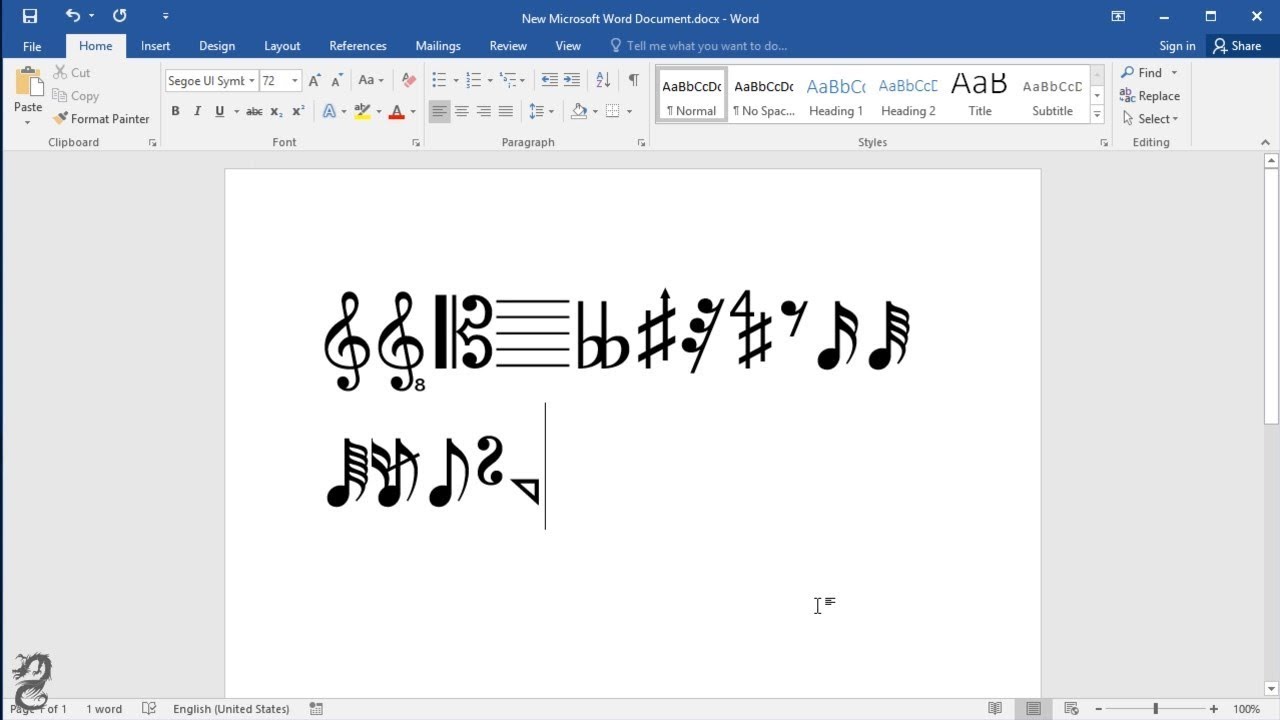Home>Events & Info>Note>How To Note Cymbal Crescendos For Drum Sheet Music


Note
How To Note Cymbal Crescendos For Drum Sheet Music
Modified: January 22, 2024
Learn how to note cymbal crescendos effectively in drum sheet music with our step-by-step guide. Master the art of creating dynamic drumming patterns and add depth to your performances.
(Many of the links in this article redirect to a specific reviewed product. Your purchase of these products through affiliate links helps to generate commission for AudioLover.com, at no extra cost. Learn more)
Table of Contents
Introduction
Welcome to the world of drumming! As a drummer, one of the most important skills you’ll need to master is notating drum sheet music accurately. And when it comes to expressing dynamic changes in your playing, few techniques are as effective and versatile as cymbal crescendos. Whether you’re playing in a rock band, jazz ensemble, or any other musical setting, understanding how to notate cymbal crescendos will greatly enhance your drumming abilities.
A cymbal crescendo is a gradual increase in volume and intensity on a cymbal. It adds depth, excitement, and drama to your drumming performance, allowing you to create climactic moments and build anticipation. Mastering the art of notating cymbal crescendos will not only help you communicate your musical ideas more effectively but will also make it easier for other musicians to understand your intentions when reading drum sheet music.
In this article, we’ll explore the intricacies of notating cymbal crescendos on drum sheet music. We’ll discuss the techniques involved, common mistakes to avoid, and provide an example to help solidify your understanding. So, whether you’re a beginner just starting to delve into the world of drumming or an experienced drummer looking to refine your notation skills, this article will provide you with the tools you need to accurately notate cymbal crescendos.
Understanding Cymbal Crescendos
Before we delve into the technical aspects of notating cymbal crescendos, it’s important to have a solid understanding of what a cymbal crescendo is and how it contributes to your overall drumming performance.
A cymbal crescendo is a gradual increase in volume and intensity on a cymbal. It involves striking the cymbal with increasing power and force over a span of time, resulting in a crescendo effect. The goal is to create a dynamic and exciting sound that adds depth and impact to a musical passage.
Cymbal crescendos can be used in a variety of musical genres and styles. In rock and pop music, they are often employed to build up to a climactic moment in a song, adding energy and power to the overall sound. In jazz, cymbal crescendos are frequently utilized to accentuate improvisation and create dramatic moments during solos. And in orchestral and symphonic music, they play a vital role in highlighting important passages and adding dramatic effect to the composition.
Understanding the purpose and effect of cymbal crescendos allows you to approach your drumming with intention and artistry. By utilizing this technique effectively, you can elevate your drumming performance and captivate your audience.
It’s important to note that while cymbal crescendos are typically performed on crash cymbals, they can also be applied to other types of cymbals, like ride cymbals or hi-hats, depending on the desired sound and musical context. The techniques for achieving a cymbal crescendo may vary slightly depending on the type of cymbal used, but the underlying principle of gradually increasing volume and intensity remains the same.
Now that we have a solid understanding of what cymbal crescendos are and their significance in drumming, let’s explore how to notate them accurately on drum sheet music.
Notating Cymbal Crescendos on Drum Sheet Music
Accurately notating cymbal crescendos on drum sheet music is essential to ensure that other musicians can interpret your intended dynamics and expressiveness. Here are some key guidelines to follow when notating cymbal crescendos:
- Start with a crescendo marking: At the beginning of the section where the cymbal crescendo will occur, add a crescendo marking ( ). This symbol indicates that the volume and intensity should gradually increase.
- Extend the note or add grace notes: To visually represent the gradual increase in volume, extend the note value of the cymbal strike. You can also add additional grace notes leading up to the primary cymbal strike to indicate a slow build-up to the crescendo.
- Use accent markers: To emphasize particular cymbal strikes within the crescendo, you can add accent markers (>) above or below the note. This indicates that those specific strikes should be played with extra force.
- Indicate ending dynamics: To signal the end of the crescendo, you can use a decrescendo symbol ( ). This indicates that the volume should gradually decrease after the climax of the crescendo. You can also use notation terms such as “dim.” for diminuendo or “calando” to instruct a decrease in volume and intensity.
- Consider using descriptive text: In addition to the visual notations, you can also add descriptive text such as “build to full intensity” or “gradually increase volume” to provide further clarification and guidance for the drummer.
- Communicate with other musicians: It’s important to communicate with other musicians in the band or ensemble about the intended dynamics and expression of the cymbal crescendo. This ensures that everyone is on the same page and can synchronize their playing accordingly.
Following these guidelines will help you accurately notate cymbal crescendos on drum sheet music, enabling other musicians to understand and interpret your desired dynamics and expression. Now, let’s explore some techniques for achieving cymbal crescendos.
Techniques for Achieving Cymbal Crescendos
Achieving effective cymbal crescendos requires a combination of technique, control, and musicality. Here are some key techniques to help you master the art of cymbal crescendos:
- Controlled stick placement: Start the crescendo with a controlled stick placement on the cymbal. Position the stick close to the edge of the cymbal to produce a softer, quieter sound. As the crescendo progresses, gradually move the stick towards the center of the cymbal to produce a louder, more powerful sound.
- Gradual increase in velocity: Begin the crescendo with a slow and controlled stroke, gradually increasing the velocity of your strokes as you progress. This will create a smooth and consistent increase in volume and intensity.
- Utilize different striking techniques: Experiment with different striking techniques to add variety and nuance to your cymbal crescendos. Techniques like tip strikes, shoulder strikes, or even playing on the bell of the cymbal can create different tonal colors and textures as the crescendo builds.
- Combine wrist and arm motions: To achieve the desired dynamics and power, utilize a combination of wrist and arm motions. Start the crescendo with controlled wrist motions and gradually incorporate more arm movement as the crescendo progresses, providing additional energy and momentum.
- Sync with the musical context: Pay close attention to the musical context in which the cymbal crescendo occurs. Adjust the speed and intensity of the crescendo to complement the overall dynamics and intent of the music. Syncing with the rest of the ensemble will create a cohesive and impactful musical statement.
- Experiment with cymbal selection: Different cymbals produce varying tonal qualities and characteristics. Experiment with different cymbal types (crash, ride, hi-hats) and sizes to find the one that best suits the desired sound and impact of your cymbal crescendos.
Remember, developing proficiency with these techniques requires practice, patience, and attention to detail. As you continue to refine your skills, you’ll be able to execute cymbal crescendos with precision and musicality.
Now, let’s explore some common mistakes to avoid when notating and performing cymbal crescendos.
Common Mistakes to Avoid
While notating and performing cymbal crescendos, it’s important to be aware of common mistakes that can diminish the effectiveness and clarity of your musical expression. Here are some mistakes to avoid:
- Excessive or sudden increases in volume: A cymbal crescendo is a gradual increase in volume, so avoid sudden or exaggerated increases in intensity. Maintain a steady and controlled progression throughout the crescendo to achieve a smooth and natural sound.
- Lack of clarity in notation: Ensure that your notation accurately represents the intended dynamics of the cymbal crescendo. Use clear markings such as crescendo symbols and accent markers to guide the performer and convey your musical ideas effectively.
- Ignoring musical context: Consider the musical context in which the cymbal crescendo occurs. It’s crucial to sync your crescendo with the overall dynamics and intent of the music. A well-placed and well-executed crescendo can greatly enhance the musical impact, while an ill-timed or inappropriate one can disrupt the flow of the music.
- Inconsistent or uneven strokes: Maintain consistency in your strokes throughout the cymbal crescendo. Avoid rushing or hesitating, and aim for an even and controlled increase in volume and intensity.
- Overlooking other elements of drumming technique: While focusing on cymbal crescendos, it’s important not to neglect other aspects of drumming technique. Remember to maintain good posture, proper grip, and control over other drumming elements to ensure a well-rounded and cohesive performance.
- Not communicating effectively with other musicians: Drumming is a collaborative musical endeavor, so it’s essential to communicate your intended dynamics and expression with other musicians in the band or ensemble. This ensures that everyone can play in sync and create a cohesive musical experience.
By avoiding these common mistakes, you’ll be able to notate and perform cymbal crescendos with clarity, precision, and musicality. Now, let’s examine an example of cymbal crescendos in drum sheet music to solidify our understanding.
Example of Cymbal Crescendos in Drum Sheet Music
To better understand how cymbal crescendos are notated in drum sheet music, let’s examine an example:

In this example, we have a section of drum sheet music with a cymbal crescendo marked. The notation begins with a crescendo marking ( ) above the first note, indicating that the volume and intensity should gradually increase.
The notes that follow are elongated, representing the gradual increase in volume as the crescendo progresses. The additional grace notes before the primary cymbal strike indicate a slow build-up to the climax of the crescendo.
Above some of the notes, accent markers (>) are added to indicate specific cymbal strikes that should be played with extra force, adding emphasis and intensity to those particular moments.
As the crescendo reaches its peak, a decrescendo marking ( ) is added to signify that the volume should gradually decrease after the climax of the crescendo.
This is just one example of how cymbal crescendos can be notated on drum sheet music. The specific notation may vary depending on the musical context and personal interpretation of the drummer.
By studying and analyzing examples like this, you can gain a better understanding of how cymbal crescendos are represented in drum sheet music and apply these concepts to your own performances.
Now that we’ve explored an example, let’s conclude our discussion on cymbal crescendos.
Conclusion
Cymbal crescendos are powerful tools that allow drummers to add depth, intensity, and expression to their performances. Understanding how to properly notate and execute cymbal crescendos on drum sheet music is essential for effective communication and musicality.
In this article, we’ve covered the fundamentals of cymbal crescendos, including their definition and purpose. We’ve discussed the importance of accurate notation, providing guidelines on how to notate cymbal crescendos effectively. Additionally, we’ve explored various techniques for achieving cymbal crescendos, such as controlled stick placement, gradual increase in velocity, and utilizing different striking techniques.
We’ve also highlighted common mistakes to avoid when notating and performing cymbal crescendos, emphasizing the significance of musical context, clarity in notation, and consistent strokes.
To reinforce our understanding, we examined an example of cymbal crescendos in drum sheet music, showcasing the use of crescendo and decrescendo markings, elongated notes, grace notes, and accent markers.
By honing your skills in notating and executing cymbal crescendos, you can elevate your drumming performances and effectively communicate your musical ideas to other musicians.
Remember, mastering cymbal crescendos takes time, practice, and an attentive ear. As you continue to develop your technique and musicality, use these guidelines and examples as a foundation for your own creativity and expression.
So, embrace the power of cymbal crescendos, and let your drumming soar to new heights!











